By Jerry Brunetti
From the August 2011 issue of Acres U.S.A. magazine
Microelements — We know they exist, but how can they help a farmer generate larger yields in an ecological way?
All the numerous trace elements found inside the Earth’s crust and in seawater are considered to contribute to nutritional homeostasis in plants and animals. However, only a select few, relatively speaking, have been researched adequately and can demonstrate to horticulturalist, agronomist or animal nutritionist the cost-to-benefit return as it relates to production and vigor of the chosen crop or livestock needing supplementation.
I will feature some of these special nutrients in this article while also encouraging those concerned with supplementing minerals either to soils or livestock rations to take into consideration the significance of the untold number of other elements found in naturally occurring mineral deposits that are mined, found in ocean water, seaweeds, fish emulsions, volcanic deposits, humic ores, wood ashes and such.
So, to start the ball rolling, I’ll begin by including those minerals having both a horticultural and livestock application.
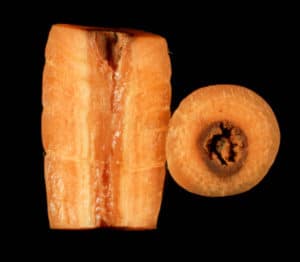
Microelements: Boron, Anion
This element is a major catalyst in both plants and animals. In plants, boron contributes to a plant’s ability to synthesize essential amino acids such as methionine and tryptophan. These, in turn, become the building blocks in synthesizing “true protein” rather than “funny protein.” “Funny protein” is a compound that contributes to
susceptibility to insect and disease attack in plants and BUN (blood urea nitrogen) and MUN (milk urea nitrogen) in livestock. BUN and MUN stress the liver and kidneys, suppress immune function and contribute to bloat and reproductive failure.
In plants, boron is also critical for sugar transport, cell wall synthesis, lignification, cell wall structure, carbohydrate metabolism, RNA metabolism, indoleacetic acid metabolism, respiration, phenol metabolism and membrane integrity as well as phytohormone production. Root elongation depends upon boron as well. Pectins depend upon boron for their formation, which is why dicots like legumes require higher amounts of boron than grasses, the former producing higher amounts of pectins, which are dependent upon calcium for their synthesis. Since boron is a catalyst for calcium uptake, the growing of legumes not only requires adequate calcium to produce these pectins, but also boron.
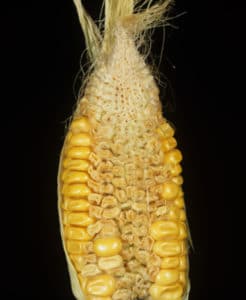
Research going back to the 1930s at the University of Vermont showed that boron-deficient alfalfa was more prone to leaf hopper damage than alfalfa properly supplemented with boron. This was also proposed by Louis Bromfield, author of Malabar Farm, who wrote that once alfalfa’s roots penetrated the subsoil rich in glacial minerals by the third year post-planting, leaf hopper damage subsided. Not surprisingly, boron is a precursor of critical components in animals as well. It plays a large role in hormone synthesis. The sex hormones estrogen and testosterone require boron for their existence. The activation of vitamin D into calcitriol depends on boron. The parathyroid hormone, which is secreted by the parathyroid gland and regulates blood calcium levels, requires boron. Sadly, boron is not approved as a supplement to be added to animal feeds, even though it is available as an over-thecounter supplement for humans and is recognized as a critical trace element to prevent osteoporosis in both men and women.
Boron also is reputed to be toxic to crops! When I was in Western Australia, the crop advisors strongly cautioned wheat growers against using boron, due to its toxicity. As a result, insect and disease incidences soared and so did the use of poisonous pesticides to control them. The crop advisors failed to report that boron is toxic when there is a deficiency of calcium in the soil and that excess nitrogen and potassium applications suppress boron. Once the acute calcium deficiencies were corrected, boron applications not only didn’t create toxic side effects; it reduced/eliminated the need for pesticides!
Microelements: Zinc, Cation
Zinc is a particularly important trace element as it relates to the synthesis of enzymes. In fact over 200 enzyme systems depend upon zinc. An important unique enzyme system is the carbonic anhydrase system — this
enzyme governs the movement of carbon dioxide. In plants, the production of carbonic acid, HCO3 from CO2, is essential for energy production in the chloroplast. In animals, carbonic anhydrase is responsible for the removal of carbon dioxide from the cells, converting it to HCO3.
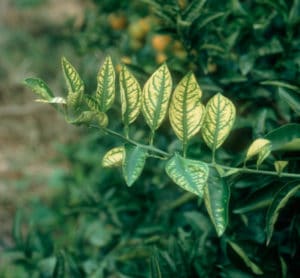
Zinc and Copper combine to produce a universal and critically important enzyme called Super Oxide Dismutase (SOD), which prevents the oxidation of cell membranes and thus cellular aging. Zinc is necessary for DNA/RNA synthesis, cell division and protein synthesis. Protein synthesis utilizes zinc in the peptide chain that is assembled from all the amino acids. Free amino acids are found in the tissue (i.e. funny protein) in zinc-deficient plants. These non-complete proteins allow the plants to be more susceptible to insect and disease challenges.
In crops, zinc is a synergist with phosphorous and the ideal ration for phosphorous to zinc is 10:1. Since phosphorous is the core element of ATP (adenosine triphosphate) then zinc obviously has a critical role in energy production in plants and animals. Zinc also contributes to drought resistance in crops. Zinc has an important role in the enzymes associated with carbohydrate, protein and nucleic acid metabolism in animals. It regulates appetite and reproductive capability. Healthy hoofs and horns, collagen production, wool strength and wound healing depend on zinc. Conception rate depends on zinc since the maturity of spermatozoa requires it. Excessive zinc intake can affect calcium, but usually it’s the opposite scenario creating the problem; i.e. excessive calcium impairs zinc metabolism.
Minerals antagonistic to zinc are excessive copper, iron and especially cadmium. Zinc has been used to reduce somatic cell count, clinical mastitis and hoof rot in cattle, and it may contribute to these healthy outcomes because zinc is a partner to the anti-infective, immune modulating vitamin A.
Microelements: Copper, Cation
Copper is very important in the synthesis of the enzyme polyphenol oxidase, which is essential for the creation of lignin. Lignin, especially in the roots,is the armor necessary for plants in resisting fungal and bacterial
adversaries. Since lignification of the anther’s cell wall is required to rupture the stamen and subsequently release the pollen,clearly copper is required for pollination. Copper forms a partnership with zinc to produce the ubiquitous protective enzyme of cell membranes called Super Oxide Dismutase (SOD).
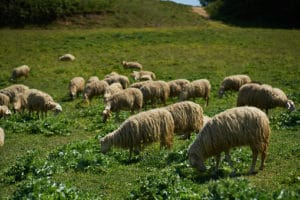
Copper increases the uptake of nitrogen as ammonium (NH4) versus nitrate(NO3), which allows plants to consume less energy in their synthesis of proteins. Increasing copper applications to soils enhances the production of both vitamin C and carotene (pro-vitamin A) in green barley. Chlorophyll production depends upon copper as does stalk strength and elasticity. Its presence in plant tissue also provides resistance to fungal diseases, the main reason why copper fungicides are to this day a reliable antidote to plant diseases. When copper is applied to soils, a gradual release of this element occurs, so copper-deficient plants should be foliar treated. Excess nitrogen applications (synthetic or manure) will tie up copper, making it less mobile and less available to plants, thus accentuating a copper deficiency. In livestock, most of the copper is stored in the liver. In sheep, that level can be as high as 70-80 percent, thus the concern of liver toxicity in sheep.
Some breeds (e.g. Welsh Mountain) are 50 percent more efficient at absorbing copper than other breeds (e.g. Scottish Blackface). The dietary considerations on sheep toxicity also depend upon the presence of sulfur and molybdenum in the diet, as they can neutralize copper by forming unavailable compounds. High molybdenum soils can wreak havoc on livestock due to this phenomenon. So it’s always important to conduct tissue tests on all minerals to ensure that balance and not just adequacy are assessed. Copper absorption can also be impaired by excessive zinc. The formation of the myelin sheath, the elastic insulating membrane, depends on copper as does the synthesis of elastin, a connective tissue that gives elasticity to blood vessels.
The copper enzyme catalase scavenges excess hydrogen peroxide, a free radical, and the copper enzyme tyrosinase is required to construct the entire vitamin C complex. Copper is necessary in mobilizing iron and its transformation into hemoglobin. Copper deficiency can lead to more internal parasites and vitamin D deficiencies and is also associated with high dietary protein (quick passage through the GI tract); excess dietary nitrate, too much brassicas pastured for too long (Semethylcysteine sulphoxide). Tall fescue contains compounds affecting copper absorption. Alsike clover is a molybdenum accumulator (have diversity in the pasture!) and vitamin E deficiencies aggravate copper deficiency (stored feeds/winter months).
Microelements: Manganese, Cation
Manganese is a powerhouse trace element. Like copper, manganese is essential for lignin synthesis. It is especially critical for the synthesis of non-structural carbohydrates. Manganese is crucial for the synthesis of polyunsaturated fatty acids (e.g. Omega 3, 6 and 9) as well as those very important fat-soluble carotenoids. It collaborates with potassium and copper for stalk strength and is necessary for the uptake of iron. Manganese deficiency is common on high pH soils containing free carbonates. Manganese has been proven to increase the vitamin E levels in plants. In livestock, manganese is the fertility element.
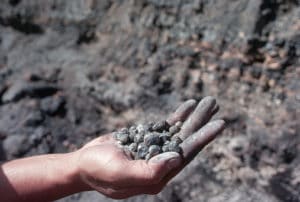
Additionally, research done at the University of Wisconsin comparing the difference in ovary weights from manganese sufficient versus manganese deficient fodder showed a nearly 300 percent difference! Manganese also is a contributor to yet another Super Oxide Dismutase and is very important for the synthesis of cartilage and neurotransmitters. Deficiencies can lead to silent heats, reduced conception, abortions, reduced birth weights, paralysis and skeletal damage in the newborn, cystic ovaries and an increased percentage of male calves. Manganese is necessary for the utilization of biotin, thiamine and vitamin C as well as lipid and carbohydrate metabolism.
Microelements: Cobalt, Cation
Cobalt is the element that comprises the cobalamin B-12 coenzyme found in rhizobium, the nitrogen-fixing microbe that dwells in the roots of legumes. Cobalamin is necessary for hemoglobin development in legumes, so it’s imperative to know that cobalt is a legume’s best friend. Ruminants require cobalt to produce cobalamin (B-12). This substance is necessary for appetite and the synthesis of methionine.
Propionic acid, a volatile fatty acid (VFA) found in the rumen, depends on cobalt in order to be converted to glucose for weight gain and energy. Cobalt deficiency can lead to impaired immune function and sheep have a larger requirement for cobalt than cattle. Ketosis may have a link to cobalt deficiency and it’s suspected that Johne’s disease increases with cobalt deficiency. Soils with high pHs and excessive soil manganese are antagonistic to cobalt uptake in forages, but a mere 7-28 ounces (200-800 grams) per acre per year can do wonders for a cobalt deficient paddock.
Microelements: Iodine, Anion
Iodine is not considered to be an essential nutrient for plant growth. However, research conducted back in the 1920s in Germany demonstrated that certain strains of non-Rhizobia bacteria utilized iodine for nitrogen
fixation. Iodine has been used agriculturally to thwart fungal and bacterial diseases in seed and foliage and was effectively used as a nematicide in the 1950s in California citrus groves. Iodine is in the same chemical family, the halogens, as chlorine, fluorine and bromine.
All of these compounds are found as salts such as sodium chloride, calcium fluoride, potassium iodide, etc. In livestock, iodine’s metabolic importance is it being a constituent of the hormones tetraiodothyronine (thyroxine, or T-4) and triiodothyronine (T-3) which are both produced in the thyroid gland and are essential for controlling energy metabolism, protein synthesis, growth and organization of tissues and the function of other endocrine glands, particularly the adrenal glands. The thyroid contains 70-80 percent of the total iodine found in the body. Iodine ranges between 0.08-0.50 ppm in forages, but in the soil can readily be 25 times more concentrated. Since grazing animals can consume as much as 5-20 percent of their dry matter as soil, then the primary source of naturally occurring iodine intake would be soil, not forages! Iodine can easily be provided as a salt block, mineral pre-mix or kelp meal with some kelp being a high as 6,000 ppm in iodine.
The usual mineral supplements provide livestock with iodine as potassium iodide, calcium iodate and ethylenediamine dihydroiodide (EDDI), or a blend of all three. Dairy cattle that are washed or teat dipped with iodophor detergents or sanitizers can absorb appreciable amounts of iodine through the skin. Iodine deficiencies can be induced by several factors. The thiocyanates derived from cyanides produced by white and subterranean clovers are goitrogenic as are the thiouracid compounds found in brassicas, like kale and turnips, which inhibit the iodination of tyrosine. Excessive cobalt in the salt, or nitrates in the feed and water can also be antagonistic to thyroid function and iodine uptake. Soybeans are mildly goitrogenic as is canola. Deficiency of iodine translates into respiratory illnesses, foot rot, poor sperm quality, low libido, retained placenta, stillbirths and abortions, mastitis, poor conception, unthrifty newborns and sparse hair coat.
In cattle, 8 percent of the dietary iodine is transferred to milk, creating powerful immune factors for calves of iodoproteins and iodolipids. In goats, it is up to 22 percent! To convert the T-4 hormone to the active T-4, selenium is required. Thus a selenium deficiency can contribute to poor thyroid function as other antagonistic factors can.
Microelements: Selenium, Anion
Like iodine, selenium is another anion considered to be a non-essential plant nutrient, even though some research indicates that crops with adequate selenium uptake have improved resistance against insects. Until the 1970s selenium was considered to be a potentially toxic element, probably due to the selenium poisoning of grazing animals foraging on certain selenium accumulator plants such as astragalus, xylorrhiza and stanleyea. Selenium is a miraculous medical mineral now recognized as a premier protector of the immune system.
The enzyme glutathione peroxidase is created when selenium is coupled with the tripeptide glutathione (cysteine, glycine, glutamic acid). Glutathione peroxidase a multi-component system reduces lipid peroxides and hydrogen peroxide thereby protecting cell membranes from free radical damage. A very similar process takes place in plants except that plants create glutathione reductase in their chloroplasts to achieve the same objective. Selenium is an immunostimulant/modulator that enhances the numbers of leukocytes, especially neutrophils. It stimulates the production of IgM and IgG antibodies and selenium is an important protectant against the peroxidation of polyunsaturated fatty acids (PUFAs) such as Omega 3 and Omega 6 EFAs.
Selenium also assists in protecting the body against excess intake and exposure to metals like mercury, lead, arsenic, cadmium and copper and mycotoxins. Selenium accumulator plants include the brassicas even though they contain the goitrogens. Thus the brassicas contain both the thyroid functioning necessities of selenium, as well as the thyroid inhibitors. Therefore, forage diversity truly matters! Selenium readily leaches from soils, so supplementing in my opinion is a must. This can be done via sodium selenite and selenium-enriched yeast which provides selenium as selenomethionine which has twice the bioavailability of sodium selenite.
Selenium requires its vitamin co-factor, tocopherol, or vitamin E to optimally perform. The ideal source of vitamin E is fresh pasture. Injectable sources of selenium can also be utilized both preventively and therapeutically, which are available as prescriptions from your veterinarian as “Multi-Min” or “Mu-Se.” Selenium deficiencies manifest as abortions, weak or stillborn calves, lambs or kids, retained placentas, poor conception, silent heats, white muscle disease in neo-nates and reduced immune function apparent as foot rot, scours, pneumonia, mastitis and elevated somatic cell counts. Although not typically practiced in the United States, Australian and New Zealand ranchers and farmers are known to apply 20 grams of elemental selenium per acre per year as selenate (not selenite).
Microelements: Chromium, Anion
Chromium is not generally looked upon as a crop essential. Although recognized as an essential trace element for animals and humans, only swine have been given approval for chromium supplementation. Chromium is a core element of glucose tolerance factor (GTF) and thus is closely associated with insulin. Vitamin B-3 (nicotinic acid) is the vitamin co-factor necessary to potentiate chromium’s effect on insulin. Thus, energy metabolism can be affected which means growth rates and lactations are the beneficiaries of adequate chromium levels. It also appears to improve the immune response and decrease the incidence of ketosis. Organic chromium (as from enriched yeast) is 5-10 times more readily absorbed than chromium chloride.
Microelements: Molybdenum, Anion
Like cobalt, molybdenum is an essential trace element for legumes to fix free nitrogen. This is accomplished by the Rhizobia bacteria producing the enzyme nitrogenase, which converts atmospheric (N2) nitrogen to nitrate
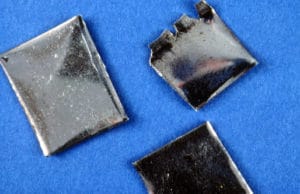
(NO3) nitrogen. All plants utilize molybdenum via the enzyme nitrate reductase to convert nitrate to nitrite (NO2) in order to make true proteins.
Research in New Zealand during the 1940s showed that just providing molybdenum alone to deficient soils increased yields of Lucerne (alfalfa), rape and pasture from 34-603 percent! Molybdenum is also instrumental in helping plants synthesize Vitamin C. Molybdenum in livestock can assist animals in excess nitrate and sulfite detoxification as well as protecting against GI tract parasites. Molybdenum however can be a serious antagonist to copper. Thus the dietary ration of copper to molybdenum should be greater than 6:1 and the sulfate to molybdenum ratio should be greater than 100:1. However, dietary molybdenum greater than 10 ppm can still create problems regardless of the copper levels. In soils, 0.4-1.0 ppm is the target. A ruminant ration need not exceed 5 ppm.
Microelements: Iron, Cation
Iron is the second most abundant metal in the earth’s crust (20,000 to 200,000 pounds per acre), following silica, yet is utilized in trace amounts by plants and animals. It has long been recognized as essential and associated with the function of the chlorophyll molecule, but it isn’t actually a constituent of the chlorophyll molecule. Its primary role is to fix magnesium to the chloroplast. Iron should always be higher than manganese in the soil for optimal uptake of both. Cold, wet and alkaline soils interfere with iron uptake and having adequate soil sulfur is the antidote.
Excess iron uptake in forages (greater than 100 ppm in my opinion) can create nutritional imbalances. Excess iron in drinking water can do the same. This free iron can tie up phosphorous, suppress copper, zinc and manganese uptake and interfere with the preferred rumen ecology. Approximately 66 percent of the body’s iron is contained in the hemoglobin and the remainder is stored in the liver, spleen and bone marrow as ferritin, to make additional hemoglobin when needed.
Hemoglobin (which also depends upon the presence of copper, cobalt and quality proteins) carries the oxygen from the lungs to all the cells and transports the CO2 from the cells back to the lungs. Iron is used by the immune system to fight pathogens but excess free iron in the blood can also “feed” them. It is a constituent of numerous enzyme systems and proteins and is also essential for the synthesis of DNA. Typically the amount of iron from forages plus what is ingested from soil provides more than adequate amounts. Iron deficiencies are usually associated with parasitical infections and diseases in young, growing plants and animals.
Salmon Fertilizer Cycle
Recently, I watched a documentary on the salmon decline in the northwestern United States due to a frenzy of dam building on major salmon rivers such as the Columbia and Snake where millions of salmon would swim to spawn and then die. A fascinating component of this story was how the salmon were important contributors of fertility to the mountainous interior of places such as Idaho because they were comprised of the fertility of the oceans. When the salmon died, they fertilized the streams and fed the macro invertebrates, which in turn fed the newly hatched salmon.
In effect, the deceased parents became food for their offspring. Meanwhile bear, eagle, osprey, wolves, coyotes, pumas and many other species dined on this ocean bounty and of course following digestion of these nutrient-dense carcasses, deposited their manure throughout the forests, meadows, and rangeland as a fertilizer rich in major and minor elements. With the advent of dams, not only have the main waterways and estuaries seen a collapse of a massive resource, especially for fishermen and those who purchased their catch — now the fertility brought inland from the sea over many thousands of years to soils built of granite and thus lacking other critical elements, is being deprived of minerals that were gifted by those sacred creatures.
The farmer or rancher can create a similar salmon practice by spreading these minerals across the fields, spraying them on plant foliage, or feeding/ free choicing them to livestock, which will absorb and utilize up to 30 percent of the elements therein, the remainder being dumped out the “back door” in a biological package of digestive juices, enzymes, microbes and other “earth foods.”
By Jerry Brunetti. This piece was first published in the August 2011 issue of Acres U.S.A. magazine.


